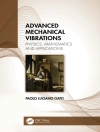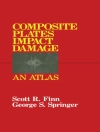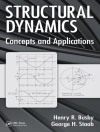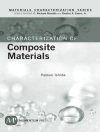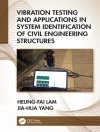The proceedings contain papers accepted for the 17th ISPE International Conference on Concurrent Engineering, which was held in Cracow, Poland, September 6-10, 2010. Concurrent Engineering (CE) has a history of over twenty years. At first, primary focus was on bringing downstream information as much upstream as possible, by introducing parallel processing of processes, in order to prevent errors at the later stage which would sometimes cause irrevocable damage and to reduce time to market. During the period of more than twenty years, numerous new concepts, methodologies and tools have been developed. During this period the background for engineering/manufacturing has changed extensively. Now, industry has to work with global markets. The globalization brought forth a new network of experts and companies across many different domains and fields in distributed environments. These collaborations integrated with very high level of profesionalism and specialisation, provided the basis for innovations in design and manufacturing and succeeded in creating new products on a global market.
Tabela de Conteúdo
A Novel Bio-inspired Approach for Adaptive Manufacturing System Control.- Ongoing Research on Adaptive Layered Manufacturing from Overtraced Freehand Sketch.- An Application of Neural Network in Recognizing of the Tooth Contact of Spiral and Hypoid Bevel Gears.- Integration of Time Management in the Digital Factory.- Concurrent Development of Products, Processes and Manufacturing Systems in PLM Environments.- Development of Accuracy Evaluation System for Curved Shell Plate by Laser Scanner.- Managing Demand Uncertainty with Knowledge Utilized Forecasting.- An Application of Simulation Based Process Design.- The Use of Expert Systems Associated to Agents for Routing Suggestions for Service Orders.- Augmented Reality for Machinery Systems Design and Development.- Development of a Virtual Environment to Implement a Computer-based Tool for Interactive Simulation of Lathe Operation.- Interoperability of Complex Business Networks by Language Independent Information Models.- A Kansei Clustering Method for Emotional Design Using Design Structure Matrix.- User’s Subjective Interpretation of Bodily Movements as Gestural Commands to Robot Companions.- A Study on Color Emotion for Plastic Eyewear.- A Strategy for Customer-oriented Human-centric Product Conceptualization.- Investigating Persuasion in Sustainable Design to Change Behaviour and Attitude.- The Consistency Between the Real Affordance and the Perceived Affordance-in the Case of Gripping a Mug.- A Design Method of Product Family for Unpredictable Customer Requirements Using Fuzzy Sets.- A Modular Design Method for Scenario Embedded Product.- Version Control Management for Federated Service-oriented File Sharing.- Ontology-based Approach in Hybrid Engineering Knowledge Representation for Stamping Die Design.-Documentation and Management of Product Knowledge in a System for Automated Variant Design – A Case Study.- Knowledge Base of Computer-Aided System for Design of Safe Ship Power Plants.- Knowledge Managementand e-learning for Underground Construction Projects.- Knowledge-Based Engineering Review: Conceptual Foundations and Research Issues.- Collaboration for Knowledge-based Engineering Templates Update.- Engineering Knowledge Modeling in Design.- Ontology-Based Intelligent Personal Assistant.- Multiagent System for Aiding Designing Process.- A Formal Model of a Complex Estimation Method in Lean Product Development Process.- Identification and Modelling of Product Development Process Activities: Time and Cost Analysis in SMEs.- The Conceptual Lean PPD Model.- From Lean Product Development to Lean Innovation: Finding Better Ways of Satisfying Customer Value.- Identifying Lean Thinking Measurement Needs and Trends in Product Development: Evidence from the Life Sciences Sector in Switzerland.- Applying the Core Elements of a Lean Enterprise to Product Development.- Collaborative Design of Modularized Set-Meal Using the Mass Customization Concept.- Sales Service Improvement for an Industrial Transformer Manufacturer.- Supporting Management and Analysis of Quotations in a Design Automation Approach to Customization.- Applying Image Processing for Rapid Customization of Multi-Color Nested Pattern Products.- A Study on Total Performance Analysis of Service Oriented Eco-businesses.- Preference Set-Based Design Method for Sustainable Product Creation.- Co-innovation and the Value-time Curve: A Case Study on the Dassault Falcon 7X and Embraer 170/190 Series.- Method for Evaluating VR-based Tools for Collaborative Design.- How to Support Mechanical Product Cost Estimation in the Embodiment Design Phase.- A Geometric Modelling in the CAD System from the Medical Images to Support Prosthesis Design.- Development of White Goods Parts in a Concurrent Engineering environment Based on DFM/DFA Concepts.- Sustainable Logistics – Example Automobile Manufacturer.- Systems Concurrent Engineering of an Electrical Ground Support Equipment for an On-Board Computer.- Systems Concurrent
Sobre o autor
Jerzy Pokojski is the author of
IPA – Concepts and Applications in Engineering (Springer) and the host of CE2010 in Poland.
Shuichi Fukuda received his doctoral degree in Mechanical Engineering from the University of Tokyo. After working in the Department of Precision Machinery, University of Tokyo, he moved to the Welding Research Institute, Osaka University. Later he worked concurrently at the Institute of Industrial Science, University of Tokyo. He became Full Professor of Systems and Management Engineering at the Tokyo Metropolitan Institute of Technology and was also Visiting Professor at West Virginia University, Stanford University, Osaka University and Cranfield University. Since his retirement, he has continued in his position as Visiting Professor at Cranfield University, as well as working as Consulting Professor at Stanford University and concurrently as Visiting Professor at the Open University of Japan.
Józef Salwiński is Deputy Dean in the Faculty of Mechanical Engineering and Robotics at AGH University of Science and Technology. He is the author of various scientific articles and publications concerning machine design.


